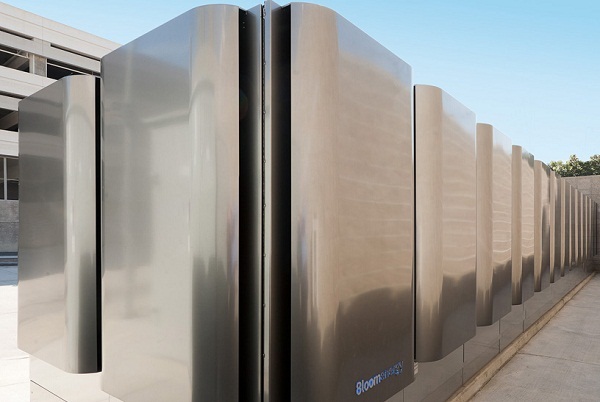Bloom boxes going in at big companies … data centers jumping aboard … FuelCell Energy doing big stationary installations … carmakers inching forward with projects – it’s enough to give you the idea that hydrogen fuel cells are on their way to the big time.
Not so, Lux Research says in a new report on the hydrogen economy’s long-term prospects.

The Boston-based analyst said that despite the fondest hopes of its backers, hydrogen fuel cells just won’t be able to compete in the rough and tumble of the energy marketplace. “The dream of a hydrogen economy envisioned for decades by politicians, economists, and environmentalists is no nearer, with hydrogen fuel cells turning a modest $3 billion market of about 5.9 GW in 2030,” the company said.
The chief barrier is cost – but not of fuel. Lux said hydrogen fuel makes up just a little over a third of the cost of ownership for stationary fuel cells and even less (21 percent) for mobile applications. “The hydrogen supply chain is not the most critical bottleneck for fuel cell adoption,” Brian Warshay, lead author of the report said in a statement. “High capital costs and the low costs of incumbents provide a nearly insurmountable barrier to adoption, except in niche applications.”
The fuel cell industry and some analysts have suggested that the plunging cost of natural gas – commonly used in solid oxide fuel cells (like Bloom boxes), and also to produce hydrogen – could work in its favor. Last May, Dan Reicher of the center for energy policy and finance at Stanford University, told Bloomberg that fuel cells were “beginning to turn the corner after decades of struggle,” with “low natural gas prices … helping drive the market.”
But in an email exchange, Warshay told EarthTechling there was a flipside to consider:
“Low natural gas prices can reduce the LCOE (levelized cost of energy) and total cost of ownership (TCO) of fuel cells by bringing down the cost of the fuel (in the case of SOFCs) and by bringing down the cost of hydrogen produced via steam methane reformation, but cheap gas also helps maintain cheap electricity prices and potentially spurs on competing conventional gas-consuming power generation or heating resources. Overall,capital costs of the systems, and membrane replacement for stationary applications, are cost prohibitive over the life of the system, regardless of input fuel cost, for most applications.”
We also asked Warshay about the post-Hurricane Sandy claim – as in this U.S. Department of Energy article we published – that the ability of some fuel cells to continue to operate after natural disasters could enhance their value for onsite and backup energy production. His thoughts:
“Certainly in the aftermath of extreme weather events, the value of reliability from onsite generation of any kind is an easy case to make, but that really depends on how consumers perceive the threat and value the risk of another event of similar magnitude occurring. In the case of commercial and industrial customers, the value of onsite generation is easily calculated based on the opportunity costs associated with losing power. For residential customers, the high upfront cost of fuel cells solely for reliability purposes without generous subsidies is a more difficult case to make.
“Additionally, fuel cells still require fuel. Though natural gas lines may be more robust in a storm than power lines, disruptions in an extreme event can still occur in a disaster. In that case, natural gas is not typically able to be purchased and bottled at a gas station like diesel (except, of course, when there’s a shortage overall). So there are advantages and disadvantages for onsite generation, but fuel cells really are most valuable when they are used frequently because, in most cases, their upfront cost is higher but their short-term marginal operational costs are lower than diesel gen-sets (not to mention more quiet and cleaner). As a result, the value proposition behind idling a fuel cell for most of the year for a residential customer is a hard case to make, whereas some commercial and industrial customers, and certainly off-grid telecom customers, can see a real value.”